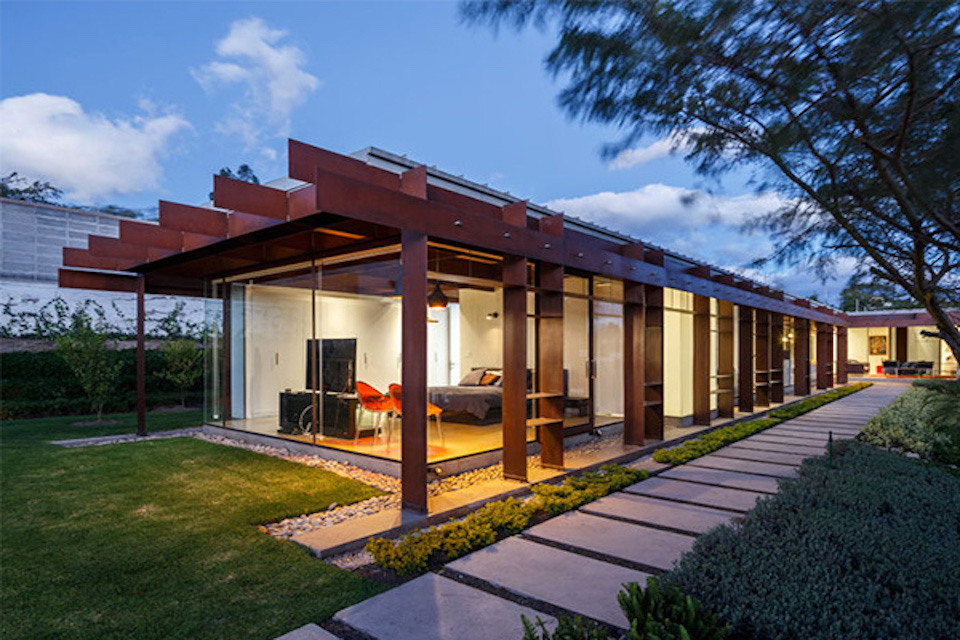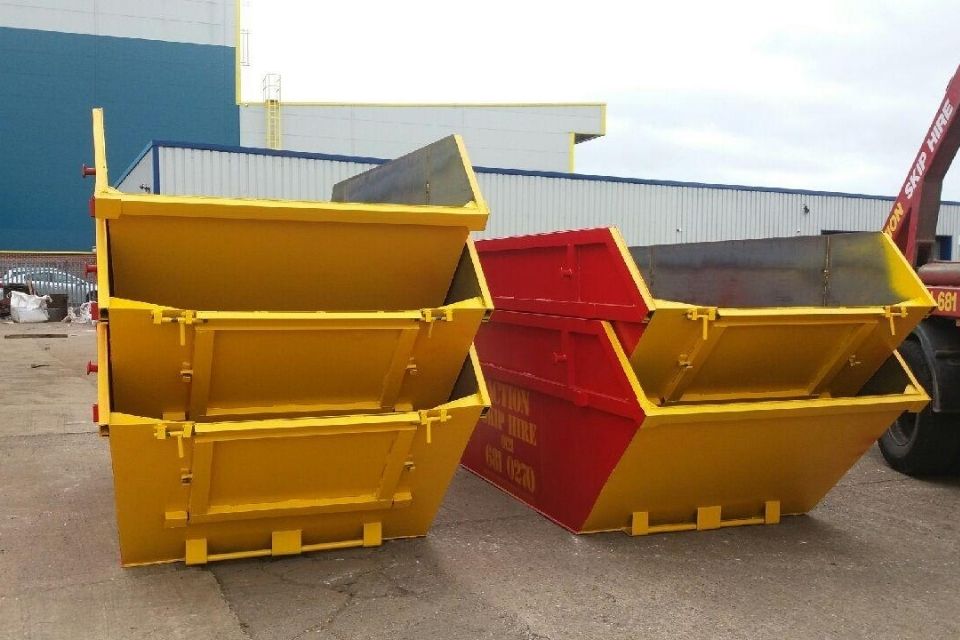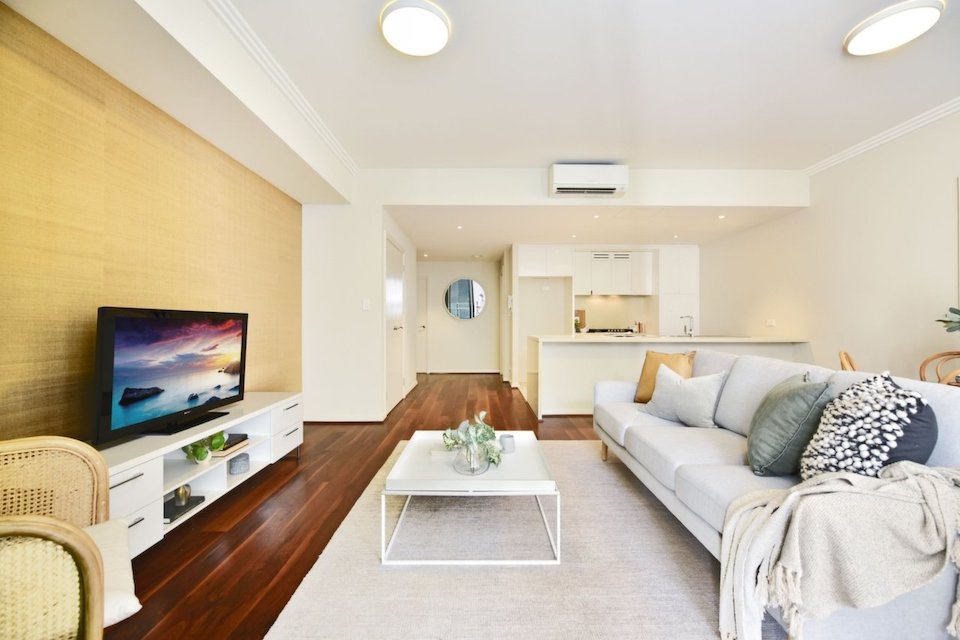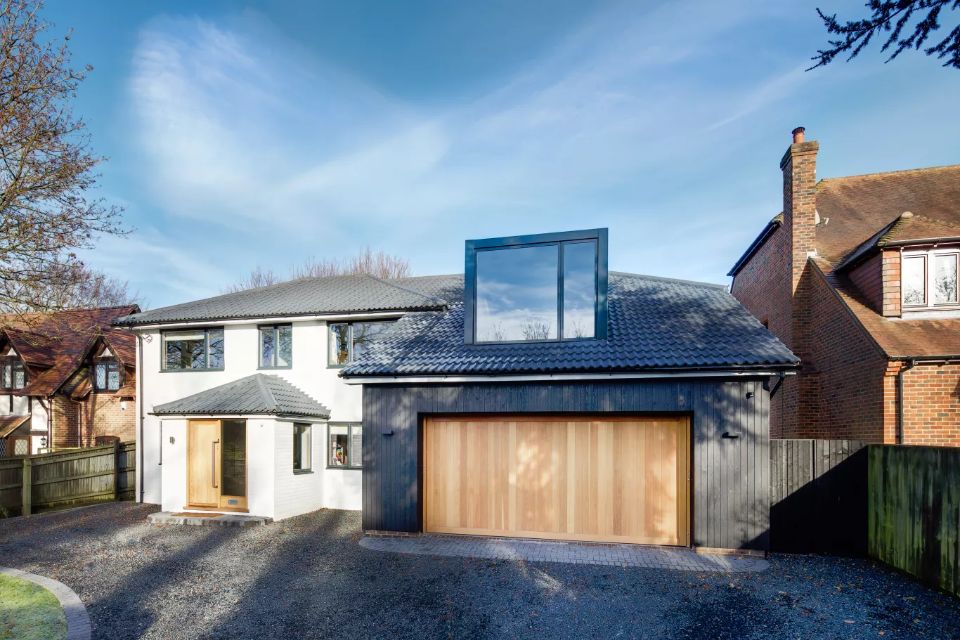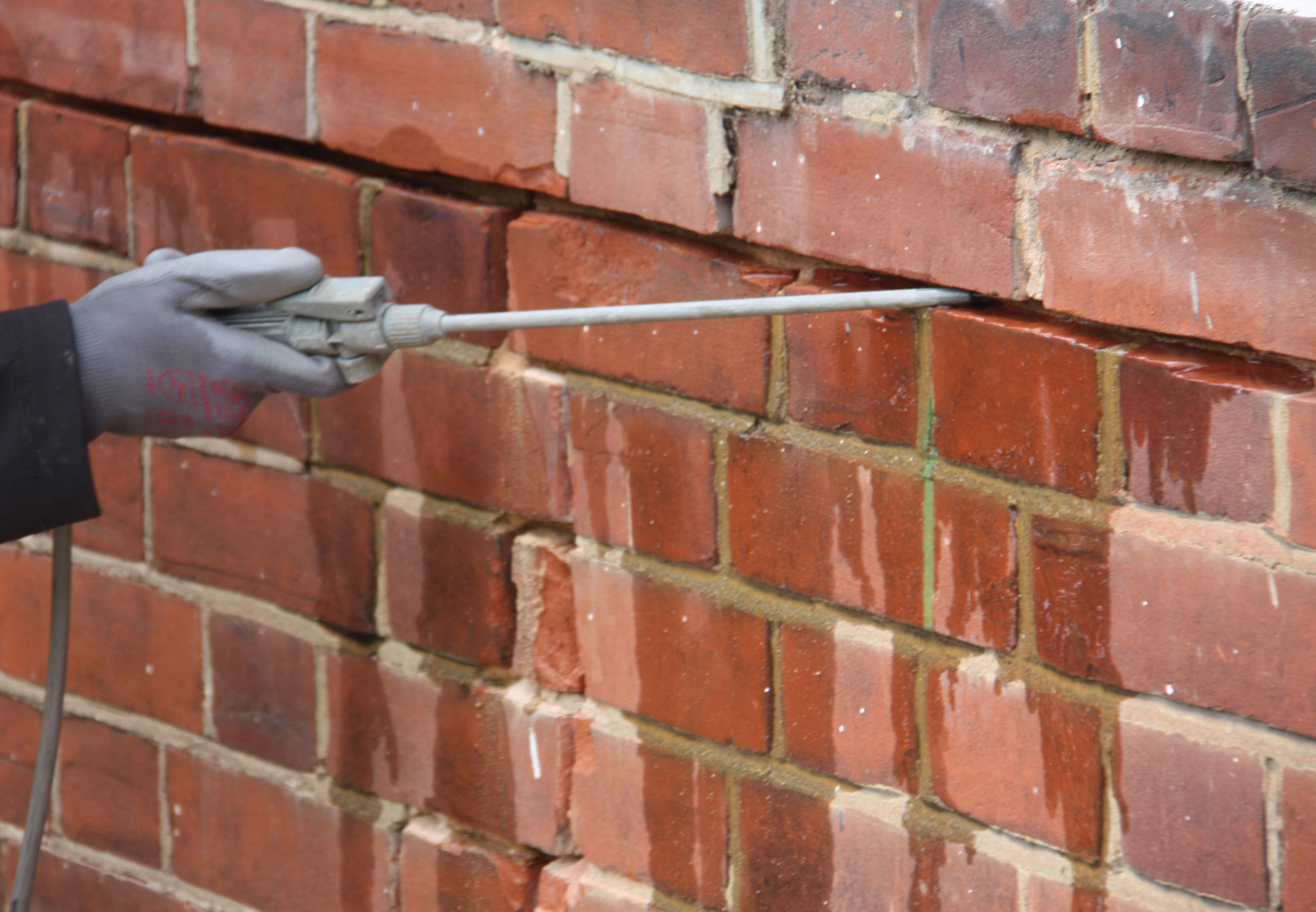How Much is an RSJ?
DIY enthusiasts may be able to install an RSJ, but the calculations required to determine the amount of support required are complex.
Building codes require that joists be affixed to a wall that will support the weight of any building affixed to the joist.
There are some important things to consider...
It must be supported by a solid concrete block for the weight to be distributed evenly.
A structural engineer's calculations should be included in any quote for installing an RSJ.
The cost of installing an RSJ depends on the size of the beam, your specific property, if utilities need to be relocated, and where you are in the United Kingdom. An RSJ installation will typically cost between £1,500 and £2,500.
This includes the expense of hiring a structural engineer, plastering, skip hire, building control approval fees, materials, and installation labour.
Why you will find this guide useful...
This article will cover the different supply costs of an RSJ, how much it costs to install, and other additional information that you will need to know when having an RSJ installation.
Therefore, if you want to have an RSJ installed in your home, this article will give you all the information you need to know.
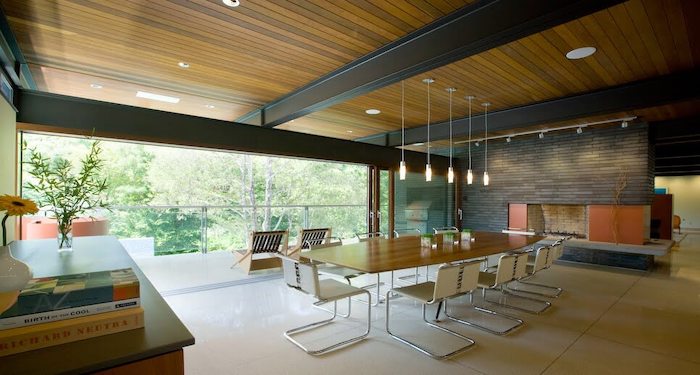
RSJ Sizes and Prices
| Job | RSJ Length | Timescale | Material Cost | Labour Prices |
|---|---|---|---|---|
| External Single Doorway | 1 Metre | 1-1.5 Days | £200-£300 | £400-£450 |
| External Window Opening | 2 Metres | 1.5-2 Days | £350 | £600 |
| Bifold doors | 3 Metres | 2 Days | £400 | £650-£700 |
| House Extension | 4 Metres | 2-3 Days | £500 | £800 |
| Loft Conversion | 5 Metres | 3 Days | £700 | £850-£950 |
- How Much is an RSJ?
- What is an RSJ?
- Supply Cost of an RSJ
- RSJ Installation Process
- Additional RSJ Installation Costs
- Tradesmen Cost to Install an RSJ
- How Long Does It Take to Install an RSJ?
- Types of RSJ
- Benefits of RSJ Installation
- How Much Does It Cost to Remove an RSJ?
- RSJ Building Regulations & Planning Permission
- FAQs
What is an RSJ?
Load-bearing and non-load-bearing walls are constructed when a house is built. The difference is that load-bearing walls support the entire building's structural weight, whereas non-load bearing walls exist solely to separate rooms.
If you wish to make an open-plan space by removing or changing a load-bearing wall, you'll need to add a steel RSJ beam to absorb the weight, or your house will collapse because it won't have the necessary supports.
Steel RSJ supports, such as universal beams, are commonly used in construction. They're sturdy, simple to construct, and inexpensive to install. They are available in a variety of conventional lengths to suit practically any purpose.
However, the length isn't the only factor to consider. As the length rises, RSJ calculations are also used by mechanical engineers to increase the size of the cross-sectional profile. This means that when the RSJ grows longer, it will not bend more than the safety restrictions allow.
As a result, the price of a steel 'I Beam' rises as its profile and length grow. Furthermore, the greater the amount of steel used in manufacturing the universal beam, the heavier it becomes.
Correctly installing an RSJ involves careful calculations, time, and skill.
An experienced builder or structural engineer will need to assess your site and run steel beam calculations to determine the sort of wall they're dealing with, the length of beam they'll require, and the amount of weight the beam will sustain.
This then affects the price you need to pay to have an RSJ installed in your home.

RSJ Beam Cost Breakdown
The cost of installing an RSJ depends on the size of the beam, your specific property, if utilities need to be relocated, and where you are in the United Kingdom. An RSJ installation will typically cost between £1,500 - £2,500.
This includes the expense of hiring a structural engineer, plastering, skip hire, building control approval fees, materials and installation labour.
We'll break down the installation costs in the table below using typical situations to demonstrate steel beam prices as well as labour costs. You can also use the statistics as an RSJ cost calculator to compare your results to your own.
A professional builder's experience and understanding are required for the installation of a rolled steel joist. You may be given an estimate for the entire job, but a tradesperson typically charges between £150 and £200 each day.
The task will necessitate at least two persons, with a labourer adding £80-£100 per day to the overall cost.
Heavy RSJs are difficult to lift and will need mechanical lifting equipment to help lift it into place. This will result in additional labour and installation costs.
For the services of a structural engineer, expect to spend between £90-£200 per hour, with the higher fee most likely to be relevant in London and the southeast. Therefore, depending on where you are based could affect the price of installing an RSJ.
Supply Cost of an RSJ
If you're just interested in the price of only an RSJ, you might want to find out how much a steel beam RSJ costs per metre. RSJ costs between £50 and £100 per metre; however, depending on which one you are looking for will affect the price.
You can buy an RSJ as a supply alone, but it is not suggested that you install it DIY. Only a specialist can offer the right calculations on how much weight can be spread throughout your RSJ. The calculations involved with establishing an RSJ are complex, and a professional is always recommended to install an RSJ.
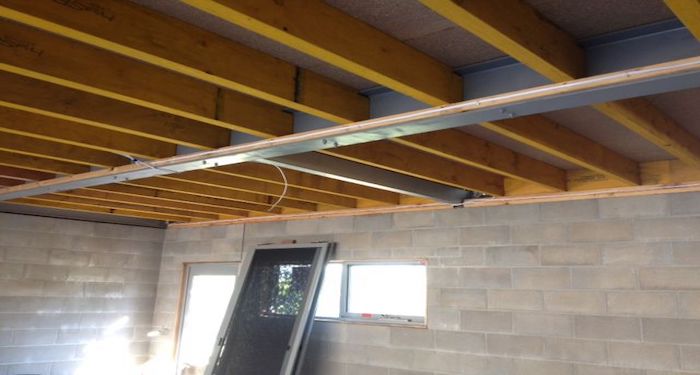
The table below shows the supply-only expenses for various items that you could need for an RSJ project.
| Type of Supply | Cost Per Metre |
|---|---|
| Universal Beams | £50-£120 |
| Universal Columns | £50-£120 |
| Double Beams | £50-£100 |
| Parallel Flange Channel | £30-£100 |
| T-Beam | £8-£20 |
| Lintels | £16-£22 |
| Special Lintels | £40-£60 |
RSJ Installation Process
Installing an RSJ is a complex job that must be carried out correctly to make sure your home remains structurally sound. Here's what typically happens during a standard RSJ installation:
Site Inspection and Assessment
A qualified builder or structural engineer will visit your home to inspect the wall and assess the structure. They will determine whether the wall is load-bearing and what size RSJ is needed to support the load.
Structural Calculations
A structural engineer will provide detailed calculations to determine:
- The exact size and type of RSJ needed
- The weight it must support
- How it should be supported at each end
These calculations are essential for both the safety of your home and when applying for building control approval.
Applying for Building Control Approval
Before work begins, you (or your builder) must notify your local authority’s building control department. An inspector may need to visit you home before, during or after installation to ensure it meets UK building regulations.
Temporary Support Installation
Once approved, the wall will be prepared for removal. A builder will fit temporary supports like acrow props and strongboys to temporarily hold up the structure above. This will help prevent sagging or collapse during installation.
Wall Removal
The wall will then be carefully removed. This is usually done with hand tools to help control dust and noise. The openings for the RSJ will be cut into the walls and padstones will be placed to spread the weight safely.
Lifting and Installing the RSJ
The RSJ will be lifted into place using manpower is light enough or lifting equipment if heavy. It will be positioned onto the padstones and checked that it is level. Once secure, any gaps will be packed and pointed with strong mortar.
Inspection and Sign-Off
If required, building control will return to inspect the installed RSJ. They will ensure it matches the engineer’s calculations and complies with all safety regulations.
Finishing Up
After the installation the following jobs will need to be completed:
- Props will be removed
- Any damaged walls will need to be replastered
- The area will need to be redecorated
- Electrical or plumbing work will need to be reinstated if required
Tip: Always use a qualified professional—incorrect RSJ installation can result in serious structural issues and invalidate your home insurance.
Additional RSJ Installation Costs
Multiple additional factors are needed when installing an RSJ as it is known to be a messy job.
Therefore, depending on how the job goes, in some cases, additional tradespeople are needed to complete the job. Below are the additional costs that you should expect when installing an RSJ.
| Additional Job | Cost |
|---|---|
| Wall Demolition | £1,000-£2,500 |
| Skip Hire | £200-£250 per week |
| Re-Decorating | £150-£160 Per day |
| Re-Plastering | £390-£510 |
Wall Demolition
Unless you're working on a new home or an addition, you'll almost certainly be removing a wall while installing an RSJ. Barriers between the kitchen, dining room, living room, and external walls for conservatories are normally removed.
The cost of removing the wall ranges from £1,000 to £2,500, with the cost of installing suitable supports ranging from £800 to £950.
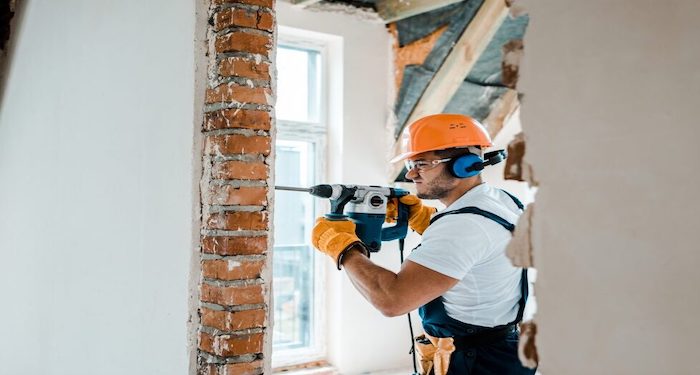
Before removing a wall, get it inspected by a builder or structural engineer to see if there are any electrical or plumbing problems, as well as whether the wall is load-bearing. Engineers and builders often charge around £200 for each visit.
The cost of removing a load-bearing wall is determined by the size of the task and the quality of the contractor you hire. A single doorway sized space (about 1m), a double doorway sized room (approximately 2m), and a bigger open plan space (approximately 4m) can cost around £1,750.
Skip Hire
When installing an RSJ, waste materials are bound to collect and build up, creating a mess. Taking a few bags of trash to the dump may be simple enough for little jobs, but it is just not a practical choice while larger operations are underway. It may be required to hire a skip in certain situations.
So, how much does skip hire cost?
Prices for skip hire might fluctuate due to a variety of factors. The size of a skip hire varies due to the size of the skip. Therefore, the bigger the skip is, the more it will cost to hire. Below is a table showing the price of the skip hire costs per week.
| Size of the Skip | Cost |
|---|---|
| Mini 2-3 Yard Skip | £60-£120 |
| Mini 4-5 Yard Skip | £100-£260 |
| Builder 6-8 Yard Skip | £150-£375 |
Larger skips are available for bigger projects. Sizes go up to 18 yards and would cost between £275 to £400 to hire for a week.
The other factor that may influence the price of skip hire is where you live or the location of the job.
If you want to hire a skip in the North, for example, the pricing will likely be substantially different from those in London as working prices are different in these area's so tradesmen and the supplies will be more if you live somewhere like London.
Re-Decorating
If you're thinking of doing some internal renovations, you will need to consider various costs. Internal remodelling projects typically cost between £100 and £150 per sqm; however, this varies depending on the kind and scale of the project.

After you've installed an RSJ, you'll need to include it at the expense of painting and decorating. This could entail having your walls painted, which can cost anywhere from £180 to £500 depending on the size of the room.
If you choose wallpaper instead, you can expect to pay roughly £180 for a small room and up to £600 for a larger room.
Re-Plastering
Sometimes, when installing an RSJ, the walls can get damaged, which means you might have to hire a plasterer to re-plaster any walls that need re-doing.
The following is a cost breakdown of common plastering jobs. We consider the cost of re-plastering existing plaster to a thickness of 3mm, as well as the time it takes to finish the job, as some plasterers charge by the day, which could affect your price.
| Size | Price | Timescale |
|---|---|---|
| Re-Plaster Small Room | £400-£500 | 1 Day |
| Re-Plaster Medium Room | £500-£700 | 1-2 Days |
| Re-Plaster Large Room | £700-£1,200 | 2-3 Days |
Tradesmen Cost to Install an RSJ
Before you acquire an estimate for an RSJ installation, keep in mind that a structural engineer's expert calculations are required as part of the process.
You'll also need a professional builder to do the work according to the engineer's specifications. As previously said, no matter how careful the builders are, this type of labour will always result in a tremendous mess.
This mess will necessitate not just extensive cleaning but also re-plastering and re-decorating, all of which will add to the expense.
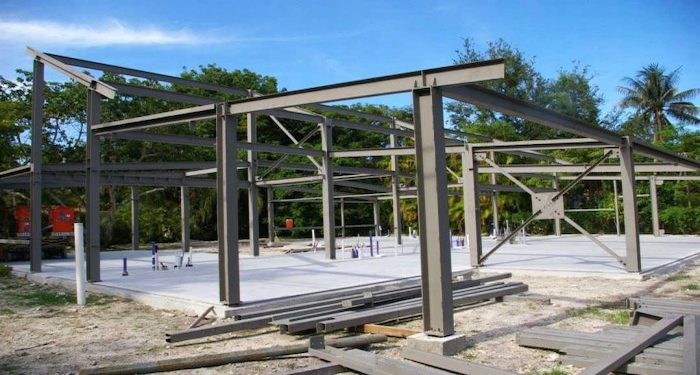
Most of the work can be done by a competent local builder, but depending on where the RSJ is located, you may also require a structural engineer, as well as an electrician and a plumber.
Many people do their own final decorating, but others will require the services of a painter and decorator.
The cost of labour to install an RSJ is determined by the size of the job. Labour for a single doorway 1m RSJ cost between £400 and £450, a double doorway 2m RSJ costs between £550 and £600, and a big open plan 4m RSJ costs between £700 and £800.
| Size | Labour Cost |
|---|---|
| 1 Metre Single Doorway | £400-£500 |
| 2 Metre Double Doorway | £550-£600 |
| 4 Metre | £700-£800 |
How Long Does It Take to Install an RSJ?
The timescale to install an RSJ can vary depending on the size and how heavy the RSJ is. The planning can also be a long process as everything has to be perfect before the installation, as it is such an important job.
Due to this, here we will discuss the process and the timescales of installing an RSJ.
If a wall must be removed before installing an RSJ, it must be done by an expert. It cannot be done DIY. The removal process is simple if done carefully and steadily, but protection should always come first, and preparation is crucial to avoid damage or injury.
A structural engineer should be consulted in person, with the engineer coming to the job site to inspect the structure and provide relevant calculations and advice. This step is critical, and you should set aside one day to complete it and examine the information provided.
A load-bearing wall can be removed in a day by a team of two or three persons, depending on the size of the property. The removal process should be organised safely and sensibly, with rubble being collected as it is formed from the destroyed wall.
Removing waste whilst you work will offer a safer work environment.
If enough people are on hand to perform it securely and correctly, installing the RSJ beam should take an hour or two. Padstones are inserted in the cavities where the RSJ will be installed to support it and raise it to the proper height to sustain the ceiling joists' weight.
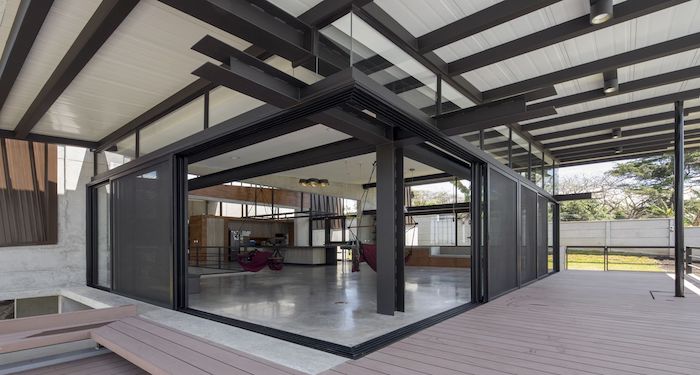
The steel RSJ should be guided into position by a team of two to four individuals. It's critical to get the beam as close to its final location as feasible before installing the steel prop supports beneath the ceiling, as they will obstruct access to the installation site once they're in place.
This mentioned issue could be a costly mistake not just in terms of labour costs but also in terms of time. It will assist to finish the work in a timely, practical, and safe manner if everyone engaged understands the procedure to be utilised for installing the RSJ and talks things over before lifting anything.
The Importance of Involving Plumbers & Electricians
There will need to be an electrician or plumber at present to decommission and make safe any wires or pipes that are being removed from the wall.
If the presence of any live services was previously undetected and no arrangement was made for the required tradesperson to be on-site to deal with it, this can cause the installation to be delayed. You may then have to wait for a tradesperson to become available.
As a result, removing the wall and installing the RSJ takes one to two days, depending on the size of the wall. Allow four to eight hours for plastering, depending on the size of the area that needs plastering, and half a day for painting or decorating, depending on the size of the area that needs painting or decorating.
As a result, after waiting for engineers and other tradespeople, installing an RSJ and finishing the job can take up to a week.
| Job | Timescale |
|---|---|
| Preparing | 1 Day |
| Installing RSJ | 1-2 Hours |
| Removing a Wall | 1-2 Days |
| Plastering | 4-8 Hours |
| Re-Decorating | Half a Day |
Types of RSJ
For usage in steel construction, RSJs come in a variety of shapes and sizes. Different steel members are made in factories based on the shapes, sizes, and qualities of these rolled steel sections. RSJs are made without joints in continuous casting moulds. The many varieties of RSJ are listed below.
I-Beam Cost
An I-Beam, also known as a H-beam or a universal beam, comprises two horizontal flanges and one vertical web. The web can withstand shear stresses, whereas the horizontal flanges can withstand most of the beam's bending action.
In the plane of the web, the I-shape is highly effective at carrying shear and bending loads. I-beams come in a variety of diameters and are commonly used in the building industry. They cost around £35-£115 per metre.
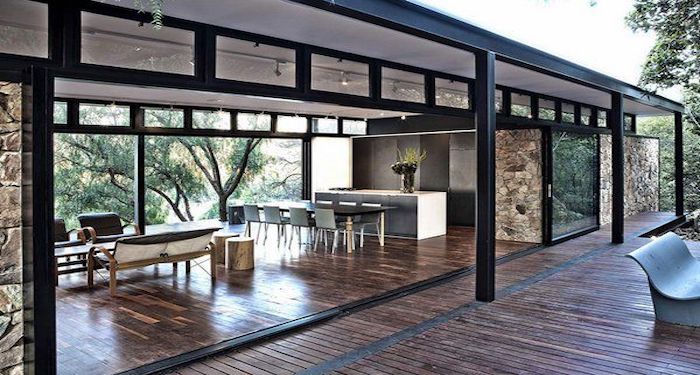
PROS
- It comes in a variety of sizes
- Good for corners
CONS
- Not used for houses most of the time
- Expensive in big bulks
Rolled Steel Channel Cost
The cross-section of structural C channels, also known as C beams, is C-shaped. The top and bottom flanges of a channel are connected by a web. C-shaped beams are a cost-effective alternative for structures with small to medium spans.
Originally intended for bridges, channel beams are now widely used in marine piers and other construction projects. This steel beam costs £10-£45 per metre.
PROS
- Cheaper option
- Popular steel beam
CONS
- Only used for small/medium-sized houses
American Standard Beam Cost
The American standard beam, often known as an S-beam, consists of a rolled section with two parallel flanges joined by a web. S-shaped beams have relatively small flanges.
The identification of the beam determines the breadth and weight of each unit. S12x50, for example, denotes a 12-inch-deep beam weighing 50 pounds per foot. It costs around £40-£300.
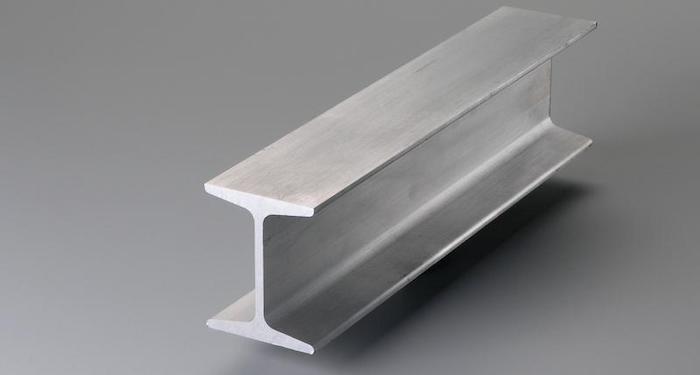
PROS
- Variety of sizes
CONS
- More tradespeople are needed because of their weight
- Mostly small sizes
Angled L-Shape Cost
Angle beams have two legs that meet at a 90-degree angle, forming an L shape. Angle beams are available with either equal or different leg diameters. For example, in an uneven leg L-beam, one leg could be 2x2x0.5 and the other 6x3x0.5.
Because of their shallow structural depth, L-beams are commonly employed in floor systems. This type of beam costs around £70-£150.
PROS
- Legs can be of different sizes to fit the building better
CONS
- Only really used on floor systems, so they are more expensive
Bearing Pile H-Shape Cost
When a project can't be built on a shallow foundation, builders use bearing piles to create a deep foundation system. To properly transport weights through the pile to the tip, bearing heaps are H-shaped.
Bearing piles are most effective in deep soils with high resistance at the tip. Individual piles can withstand weights of over 1,000 tonnes. The cost of this steel beam is £30-£95 per metre.
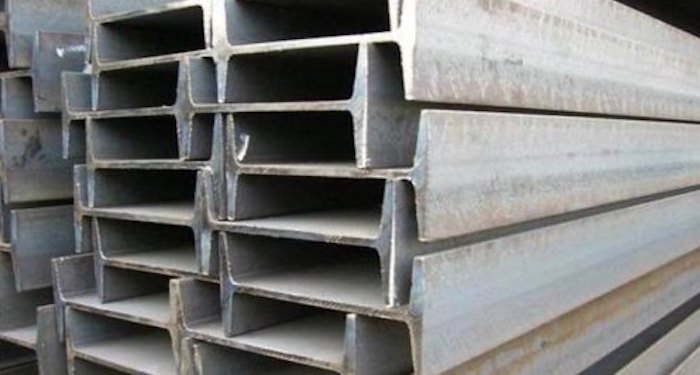
PROS
- Good as the final solution
CONS
- Very heavy so needs more tradespeople to complete the job
Pipe Beam Cost
Structural steel pipes provide strength and stability in a range of building applications. Pipes are hollow, cylindrical tubes that are available in a wide range of sizes.
Engineers frequently use steel pipes to suit the needs of water, oil, and gas projects. Costs £35-£115 per metre.
PROS
- Strong
- Available in different sizes
- Good for additional tradespeople
CONS
- More expensive to use due to its material
T-Beam Cost
A load-bearing tee beam, also known as a T beam, has a T-shaped cross-section. The flange is at the top of this cross-section, with the vertical web below it. Tee beams can sustain huge loads, but they lack the bottom flange of an "I" beam, making them less suitable for applications.
A T-beam costs £10-30 per metre
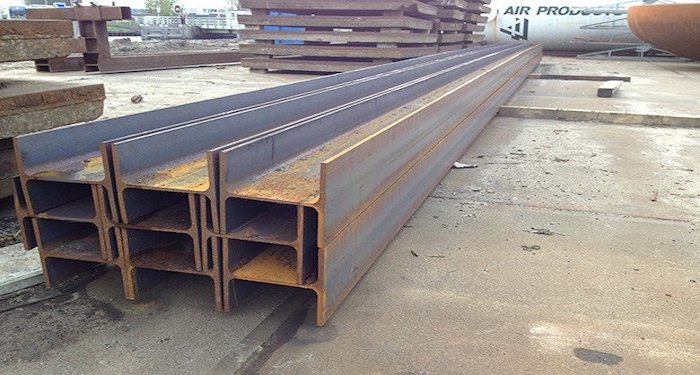
PROS
- This is the most popular RSJ beam
- Affordable steel beam
CONS
- It lacks a bottom flange
Custom Shapes
Engineers today aren't restricted to using simply the most prevalent shapes. Custom metal fabrication enables the creation of a wide range of unique structural steel shapes for any project.
Metal fabricators can mould steel into various shapes for individual applications using cutting-edge tools and processes such as water jets, laser, and plasma cutting.
If you can imagine it, chances are a skilled metal fabricator can make it happen. The price depends on the shape and size and the type of RSJ beam you are looking for.
PROS
- It fits the building perfect to its size
CONS
- It can be more expensive
- More time-consuming
Benefits of RSJ Installation
The benefits of RSJ (rolled steel joist) beams are ongoing. These beams have been employed for several applications for years due to their immense strength, support, and quality.
They're commonly utilised in industrial and commercial construction, and they're becoming more popular in-home projects like new floors, patios, and decks. Because the material is easily twisted and handled, it is a very versatile option.
Eco-Friendly
Steel is well-known for its environmental friendliness. Steel is employed in so many projects because the building sector has improved its green credentials in recent years.
The number of times RSJ beams may be recycled is unlimited, which means less waste is transported to the landfill.
Steel is also regarded as a very green alternative because it does not emit greenhouse gases. In comparison to alternatives like concrete and wood, RSJ steel beams are also extremely cost-effective.
Reliable
Steel has the highest strength-to-weight ratio of all the building materials and can withstand a tremendous amount of stress and weight. It can endure almost whatever the weather can throw at it, which is why it is frequently used in areas where the weather can be particularly harsh.
Cut, form, shape, and bend RSJ beams into a variety of dimensions and lengths. They're also fire-resistant and don't require any chemical treatment. Steel that has been galvanised will not rust. It can even keep structures from collapsing during hurricanes and earthquakes.
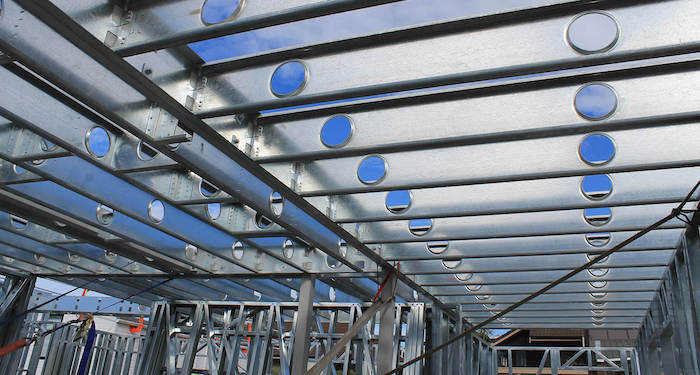
Flexibility
Steel beams, as previously indicated, are custom-made to your specifications. Because of the material's flexibility, the design is conceivable. Steel may be shaped and sized to any size and shape.
The incredible part is that the moulding does not affect the material's quality. Furthermore, because of its flexibility, it is safer to use because it can be easily recycled.
Gives a Sleek Finish
While the look of unfinished or knotty wood may be desired in some rustic designs, steel provides a streamlined alternative. Steel, unlike other options such as wood, is made, so it will be smooth and free of the knots and imperfections that characterise wood.
How Much Does It Cost to Remove an RSJ?
If you're rebuilding a supporting wall or knocking down the wall above the steel beam, you may want to remove an RSJ. Another reason to remove an RSJ is to replace it with a different type of support beam or to replace it with another RSJ.
Removing an RSJ is a difficult task that should be carried out carefully and properly. If you are unsure about the job requirements while removing an RSJ, you should consult a structural engineer for advice on the optimum approach for removing your rolling steel joist.
If you're removing a rolled steel joist, you'll need to think about whether you need to replace it with something else.
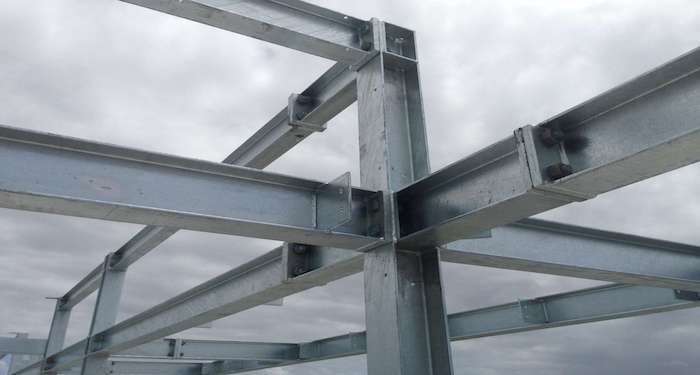
If there is still a load-bearing fixture above where the RSJ was, you'll need to replace it with something else, such as a wall or another support beam. For the labour of uninstalling your RSJ, a builder would charge you between £20 and £35 per hour.
Various additional fees may be incurred while deleting an RSJ. You may need to consider waste removal. A one-week skip rental would set you back between £200 and £250as you will need this due to it being a messy job. Then you need to re-plaster and re-decorate, which is spoken about above.
RSJ Building Regulations & Planning Permission
When installing RSJ you must comply with UK Building Regulations to ensure its structural safety. In most cases, planning permission is not required for internal alterations, but Building Control approval is essential for this type of work.
Your local authority’s building control team must be notified before the work begins. A structural engineer's calculations will usually need to be submitted as part of the approval process. After installation, the work may be inspected to confirm compliance with Part A of the Building Regulations.
Planning permission is only required if:
- Your home is a listed building
- The work forms part of a larger extension or home conversion
- You’re altering the external appearance of the property
For peace of mind, always check with your local planning authority or building control office before starting RSJ-related work.
FAQs
Q: What does RSJ stand for?
A: RSJ stands for rolled steel joist.
Q: How much wall does an RSJ need to sit on?
A: To build a rolled steel joist at either end of a solid masonry wall in good condition, you'll need at least 150mm of cast concrete for it to sit securely on the wall.
Q: How long does an RSJ last?
A: The protective coating used in the steel storage yard is intended to safeguard the steel used in construction and is expected to last at least 100 years, so it is definitely worth having one.
Q: What is RSJ used for?
A: To ensure structural integrity, RSJs are rolled from a single piece of structural steel (S275JR grade) and used to support walls and floors when making an opening in a load-bearing wall or when building an extension.
Q: How can I tell if a wall is load-bearing?
A: There are a few ways to identify if a wall is load-bearing. Some common signs include:
- Wall direction: Load-bearing walls often run perpendicular to floor joists above.
- Thickness: Interior load-bearing walls are usually thicker than standard partition walls.
- Wall position: Central walls or those directly above/below other walls are more likely to be load-bearing.
- Loft indicators: In your loft, if joists rest directly on the wall, it may be carrying structural weight.
- Construction material: Solid brick or block walls are often structural, unlike stud walls which are typically not.
If in doubt, get a professional assessment. Removing a load-bearing wall without support can cause serious structural issues.

